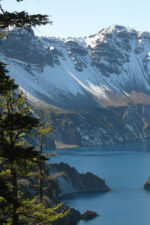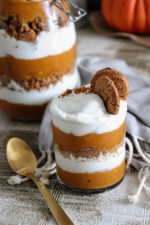Tea Chemistry 101
Interview with Michelle Francl
Michelle Francl, Frank B. Mallory Professor of Chemistry at Bryn Mawr College and an avid tea drinker, discusses some of the discoveries she made during her research for her latest book, Steeped: The Chemistry of Tea.

Which plant does tea come from?
Except for herbal varieties, all tea originates from one plant, Camellia sinensis. The earlier you harvest its leaves during picking season, the more caffeine they’ll likely have. Green tea is produced by heating the leaves soon after they’re picked to destroy enzymes that cause browning, whereas black tea is deliberately bruised to instigate oxidation and a change of color in the leaves—it’s the same reaction that browns apples and bananas.
How should you brew your tea for maximum benefits?
You’ll want to steep it for enough time to extract the antioxidants and caffeine, but don’t let it go too long or it will get bitter. If you’re using a tea bag, you only need to leave it in the water for about a minute or two because the leaves have been crushed into small pieces; loose-leaf tea leaves are bigger and thus require more time. You’ll get the most flavor, caffeine, and antioxidants, though, with loose-leaf tea.
When I brew, I use a tea basket about the size of my mug and let the loose leaves sit for about four minutes; little tea infusers are cute, but they don’t give the leaves adequate access to the water to steep as effectively. Whichever method you prefer, agitate the basket, infuser, or bag in the water to get extra healthy antioxidants and a greater extraction of compounds like L-theanine and linalool, both of which have calming properties.

How does brewing temperature affect tea?
The temperature of your water is extremely important. You won’t extract as much caffeine from the tea leaves if the temperature drops too much while making your tea. For my research, I wired my pots and cups with temperature sensors, which helped me discover that I needed to prewarm my pot and cup with a little hot water beforehand to keep them both warmer for longer.
What other factors are important to consider?
If you like milk in your tea, be sure to leave it out on the counter first so it can warm up a little; this will reduce the chance of it curdling in the cup. Additionally, including a bit of sugar does more than cover up tea’s bitterness—it actually blocks the receptors on your tongue that can taste that bitterness.

Why don’t you recommend making tea in a microwave?
Using a microwave can produce a white foam called “tea scum,” which is composed of organic substances and calcium and magnesium carbonates. It won’t hurt you, just make your beverage less flavorful. Water boils a little more slowly in a tea kettle than in a microwave, so more of the oxygen can get driven off, making tea scum less likely. If any does form, you can remove it by adding lemon juice.
What are the benefits of prebrewing your tea?
Doing a quick prebrew will lower the caffeine content of your tea, if you prefer. For teabags, leave the bag in the water for thirty seconds, discard the liquid, and then reuse the bag. With loose leaves, let them steep for three or four minutes before dumping the water and remaking your tea. Just note that this process might make your tea seem a little watery since caffeine has a distinctive taste.

Your book stirred up some controversy in Great Britain. What in particular ruffled feathers?
In interviews with British newspapers, I mentioned that adding a pinch of salt can make tea taste less bitter, a tip that comes from eighth-century Chinese manuscripts. People said I caused a “brewhaha” by saying this, adding that my ideas put me in “hot water”—the puns were amazing. I even caused a diplomatic stir; the United States embassy in London issued a tongue-in-cheek statement that my views on Britain’s national drink threatened Anglo-American relations. It did note, however, that the embassy would continue making tea the “proper” way, in the microwave, which is funny because microwaving tea is nearly unthinkable in Britain. (By the way, if you do try the salt method, you only need a little bit; if your tea tastes salty, you’ve added too much.)
What types of teas do you enjoy best?
For a long time, I’ve liked black teas from Assam, India. They’re a great morning tea with a lot of caffeine. Another favorite of mine is something called green snail tea; its leaves look like tiny snails, but no mollusks are used in making it.


















